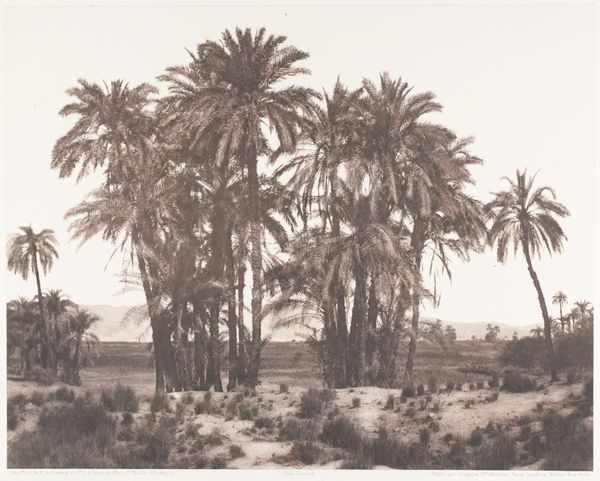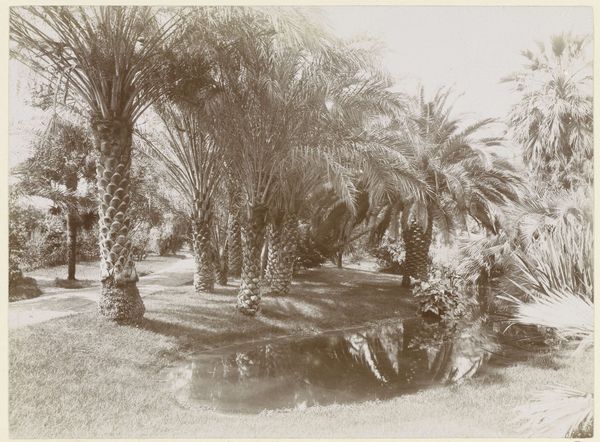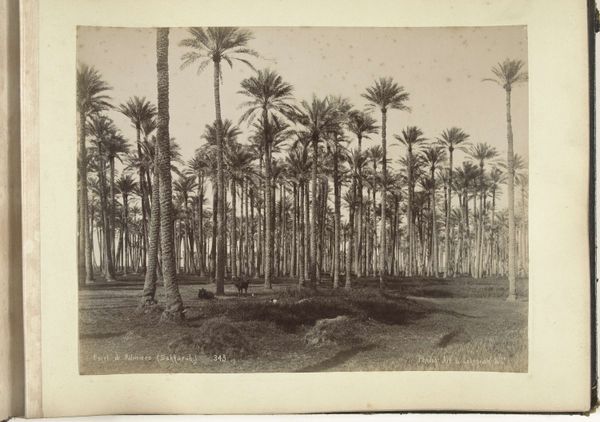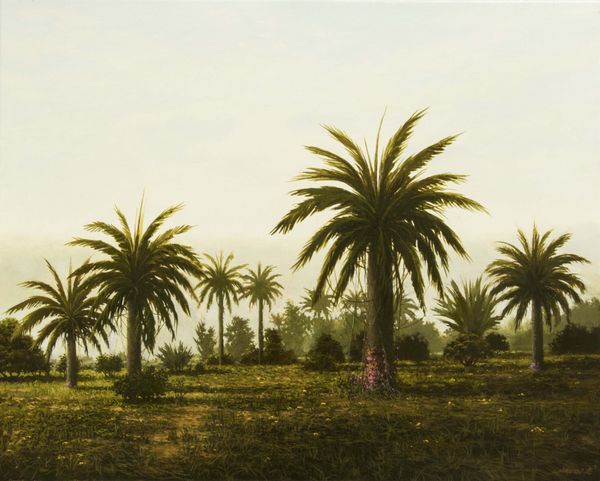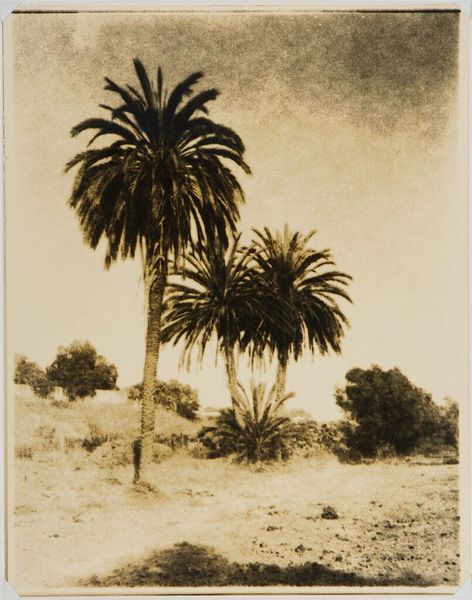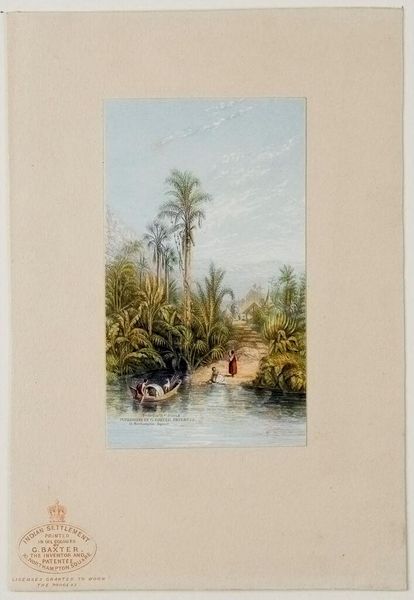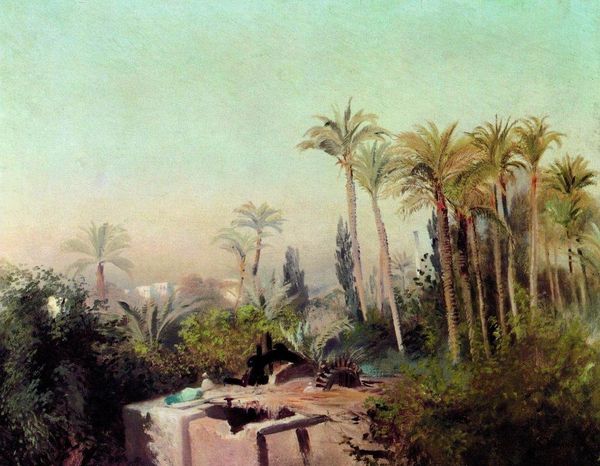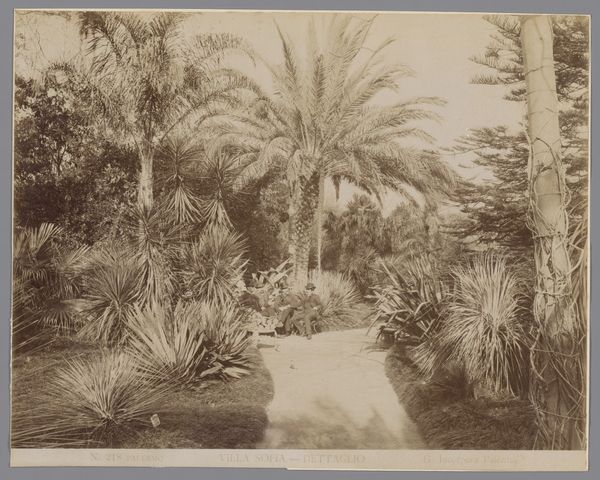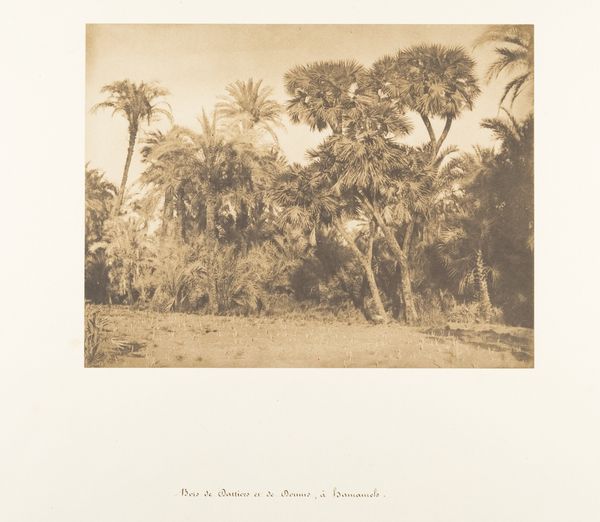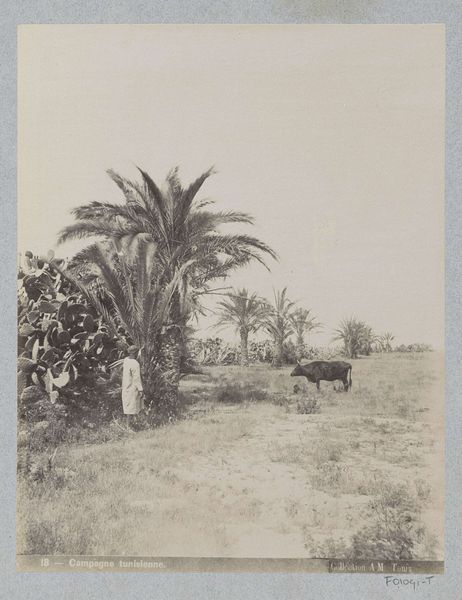
Dimensions: height 170 mm, width 230 mm
Copyright: Rijks Museum: Open Domain
Editor: Here we have “Palmentuin van Elche,” a photograph dating back to around 1900, credited to F. & Co. The way the light filters through the palm trees creates a dreamlike quality. I’m struck by how timeless it feels. What do you see in this piece? Curator: The enduring allure lies, perhaps, in its symbolism. Palms, across cultures, represent triumph, peace, and eternal life. Their presence here, bathed in the soft light, echoes the idea of paradise, a place of refuge and timeless beauty. Notice that one arched palm. What does that particular form evoke for you? Editor: It’s kind of whimsical, but it also looks like it’s reaching out, bridging a gap. Does that connect with the idea of paradise? Curator: Indeed. Consider this image in the context of its time. At the turn of the century, photography was still finding its artistic voice, often borrowing from painting styles like Impressionism. This photographer, whether consciously or not, utilized a visual shorthand—palms equals paradise—to connect with the viewer on an emotional, almost subconscious level. It speaks to the desire for a harmonious existence. Editor: So the image isn't just a nice view, it's tapping into something deeper about what people wanted, or yearned for? Curator: Precisely. The symbolism creates a bridge across time, allowing us to feel the same longing for peace and tranquility that viewers might have felt a century ago. Even in what seems a simple landscape, complex meanings reside. Editor: That’s really interesting. I never considered how much cultural baggage a single type of tree could carry! Curator: Visual language surrounds us. Recognizing it helps us decipher the world around us, and images from the past.
Comments
No comments
Be the first to comment and join the conversation on the ultimate creative platform.
